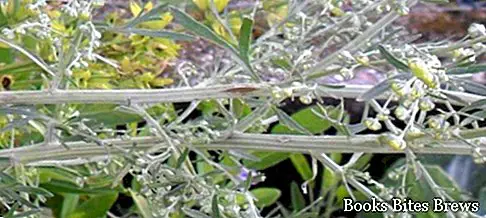What is absinthe, how it is made and what features this officinal herb has, properties and contraindications, dosages to prepare an infusion.
Absinthe properties
It is an officinal aromatic herb, with branched rhizome and with stems capable of reaching even one meter in height with variable ramifications.
The lower leaves, which have a long petiole, are made up of several leaflets divided in turn into lacinias, while the upper leaves are smaller and less divided.
The stem ends with an inflorescence of flower heads, made up of tubular yellow flowers.
The entire plant is covered with dense hair, while the drug is made up of leaves and flowering tops that are harvested in the summer, or in the period of maximum flowering.
Absinthe is generally found in dry places, on walls and on the roadside.
In 1800, the cultivation of this plant had spread widely throughout Europe but, following the entry into force of the ban on the use of absinthe as a liqueur, the cultivation of this plant went gradually out of use.
Regarding the properties, absinthe is a plant containing an active principle, toxic due to the absintol contained in it.
For this reason, the use of absinthe-based liqueurs can cause nervous disorders and organic weakness.
For other bitter-acting substances, assensio preparations are instead useful against digestive atony with constipation, as occurs in anemic, nervous and convalescent subjects.
The drug is effective against digestive disorders due to poor liver function and as a wormer.
Recommended readings- Barberry: what it is used for, therapeutic properties of berries
- Mallow: what it is used for, therapeutic properties, infusion, decoction
- Holly: meaning, properties, infusion
- Birch: tree characteristics, herbal tea leaves, charcoal
- Absinthe: what it is, characteristics of officinal herb
Due to the dangers it presents, it is still better to replace absinthe with other types of plants having similar action.
Absinthe drugs must not be used during pregnancy.
As for the methods of use, the powder can be used as a tonic, as a vermifuge and as an antipyretic.
To obtain an infusion, put half a teaspoon of the drug in a cup of water, to be drunk three times during the day, about thirty minutes before each meal.
The absinthe infusion can be associated with fennel, anise and mint, in case you want to encourage appetite when liver dysfunction is underway.




